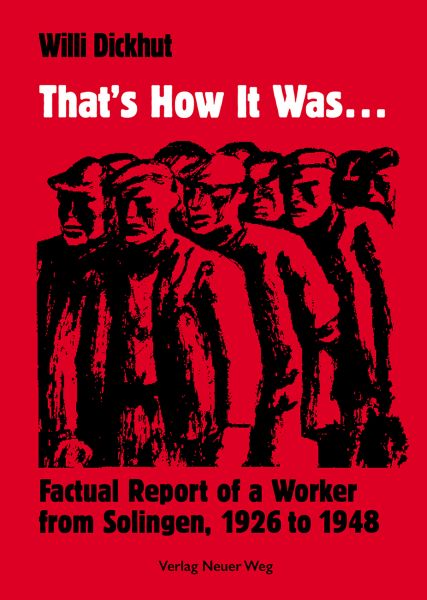That's How It Was…
Factual Report of a Worker from Solingen, 1926 to 1948
The 1920s and early 1930s were a very turbulent time in the working-class movement. As the ruling class no longer could maintain its power by means of bourgeois democracy, it took recourse to fascist dictatorship. The working-class movement was smashed – by the most brutal terror ever experienced by humanity. The revolutionaries were forced deeply underground.
The fascist dictatorship was destroyed by military means. But under the cloak of "education for democracy" the Western occupying powers exercised a veiled dictatorship for the purpose of unimpeded preparation of the Cold War. The German reactionaries were involved in this plan. The spearhead was directed at the Soviet Union.
Against this historical backdrop the author also describes his personal experiences and struggles as a functionary of the working-class movement: The past comes alive.
Willi Dickhut, born in 1904, was four years old when his father died in an accident. He consciously experienced hunger, hardship and misery during the First World War. In 1918 he took up an apprenticeship as fitter and lathe operator in his hometown Schalksmühle in the Sauerland region. As apprentice he participated in the general strike against the Kapp Putsch in 1920. In early 1921 Willi Dickhut joined the German Metal Workers' Union. In 1924, for the first time he was "disciplined," i.e., summarily dismissed for taking part in a weeks-long strike in defense of the eight-hour workday. In 1926 Willi Dickhut became a member of the Communist Party of Germany (KPD) and a functionary of the working-class movement. This is where his factual report, That's How It Was…, begins…
Versandkostenfreie Lieferung! (eBook-Download)
Als Sofort-Download verfügbar
- Artikel-Nr.: SW9783880216075110164
- Artikelnummer SW9783880216075110164
-
Autor
Willi Dickhut
- Wasserzeichen ja
- Verlag Verlag Neuer Weg
- Seitenzahl 614
- Veröffentlichung 01.06.2022
- Barrierefreiheit
- ISBN 9783880216075
- Wasserzeichen ja

